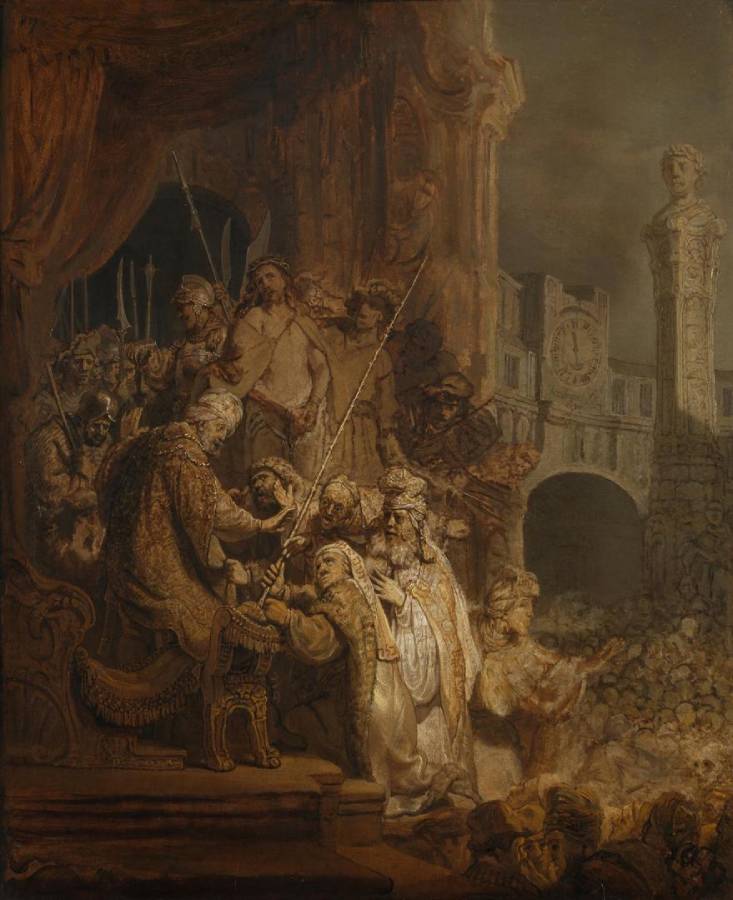Rembrandt (1606-1669)
Ecce Homo
1634
Oil on paper mounted onto canvas, 54.5 x 44.5 cm
National Gallery, London
‘Ecce Homo’, the Latin title of this painting, is taken from the Bible, and means ‘Behold the man!’ These were the words of Pontius Pilate, the Roman governor of Judea, when he was sitting as the judge during the trial of Christ, as described in the Bible (John 19: 5). It’s a critical point in the story of the events leading to Christ’s crucifixion – the moment when he is left alone and isolated, spurned and condemned by his own people.
Pilate, here shown wearing a turban and rising to his feet, is presenting Christ to the crowd. He rejects the long rod of justice the Jewish elders are offering him, his indication that there is no fault for which he can find Christ guilty. But as a seventeenth-century audience would have known, the priests – depicted by Rembrandt as ugly caricatures clamouring at Pilate’s feet – continued to accuse Jesus of claiming to be ’King of the Jews‘ and the crowd demanded his crucifixion. ’We have no king but Caesar!‘ was their chant, a sentiment Rembrandt has echoed visually with a monumental bust of Tiberius Caesar that towers over the right-hand side of the scene. The hand of the clock behind him points to six, the time specified in the Bible (John 19: 14), which goes on to tell of Pilate’s weakness and his agreement to Christ’s crucifixion.
The picture evokes the fevered atmosphere of this show trial and is dominated by images of earthly power and authority: soldiers, priests, judges, the emperor and the mob. But Christ has an air of detachment, despite the bindings, the crown of thorns that has been mockingly placed on his head and the sharp blades of the soldiers’ spears that stand threateningly behind his head. He is slightly higher than his captors, and is the only figure looking upwards towards the ’true’ judge, God.
This small black and white painting (known as a grisaille) was not made for sale. It is a full-scale preparatory study for one of Rembrandt’s etchings – the only known example of such a work. The painting, which is on paper, was laid onto the etching plate, onto which the design was traced with a stylus. A print – a mirror image of the study – would be made from that. Indentations made during this tracing process are visible in the outlines of the key figures and features, and are especially clear around the clock tower. Despite the lack of colour (which wasn’t necessary for an etching) Rembrandt has focused considerable attention on Pilate and the priests in the foreground. He has used thick layers of paint and white highlights to capture the raking light on their exotic costumes and anxious expressions. Much of the rest of the painting, especially on the right side, has been only lightly sketched in. More detail was added to the final etching.
Rembrandt was a prolific print maker and his studio produced hundreds of images for sale. This was one of his most popular and by the eighteenth century it had become known as ‘The Thirty Guilder Print’, reflecting the high price paid for impressions of it. (NG)
